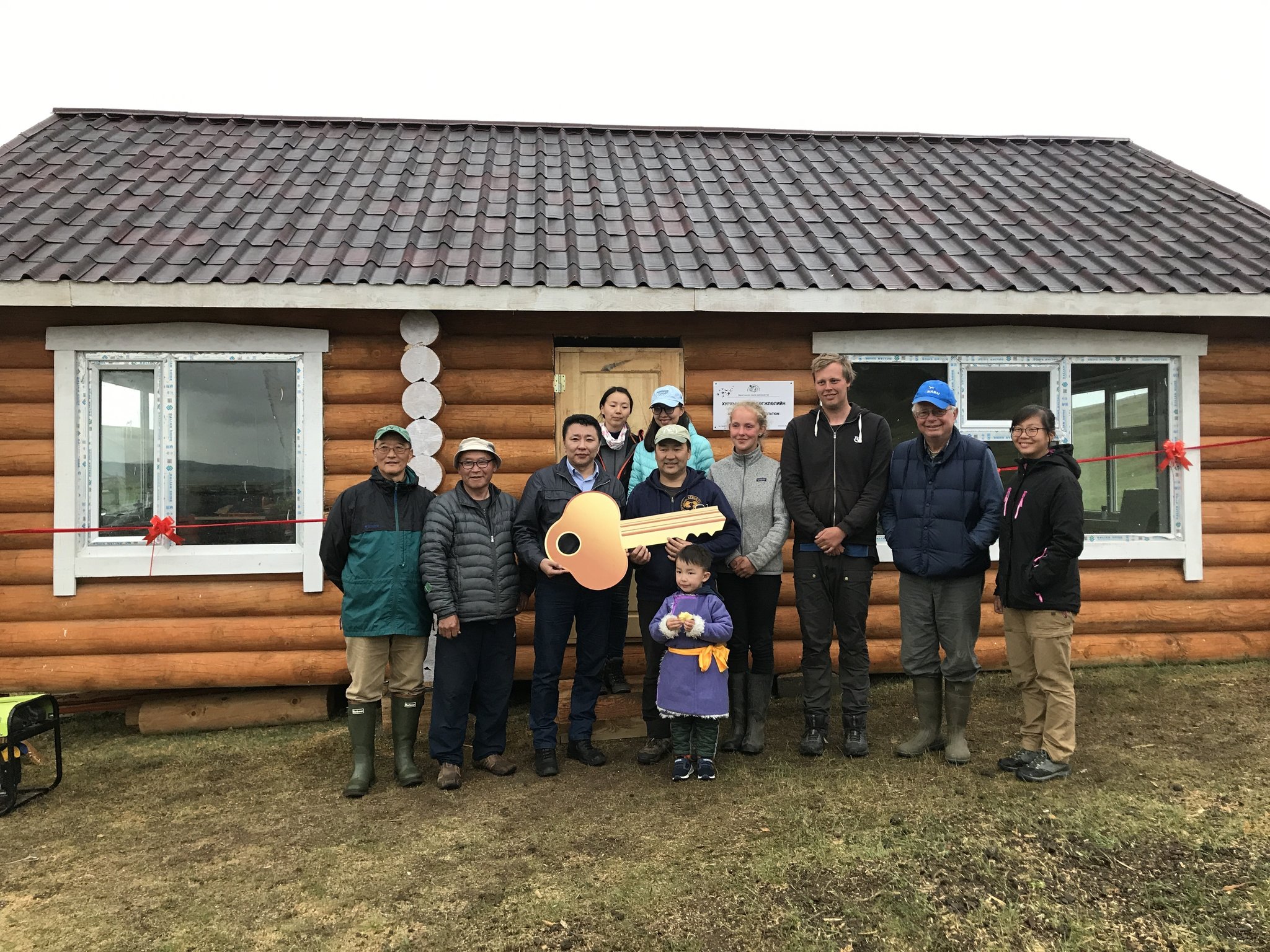Mongolia's young but burgeoning bird ringing stations
Our biologists are building a network of bird ringing stations in the country. We believe there is a huge potential for this network of ringing stations to contribute to science, conservation, and society in Mongolia.
Our biologists are building a network of bird ringing stations in the country. We believe there is a huge potential for this network of ringing stations to contribute to science, conservation, and society. Compared to well-established bird ringing programs in developed countries, Mongolia's bird ringing stations are very young and there is much that can be done.
WSCC of Mongolia has extensive experience in wild bird capture and marking that has expanded from its founding to the current effort. Based on our experiences we started our first bird ringing station in 2015 at Khurkh Valley in northern Khentii province. Slowly and gradually we are increasing our efforts and establishing new stations in carefully selected locations. Now there are songbird ringing activities being undertaken at three locations in the country led by our biologists and with the help of dozens of volunteers. So far, we have ringed 37,139 individuals of 200 species at these stations in the last five years. Because the first two years were pilot years for stations, few birds were ringed in 2015 and 2016. Most birds have been ringed in the last two years and is a sign that sites are well located and running smoothly.

In 2019, a total of 18,531 birds belonging to 171 species were captured and marked at the three stations in Mongolia. Annually, we list the five most common species were that were ringed at these bird ringing stations, which for 2019 were Hume’s Leaf Warbler, Little Bunting, Yellow-browed Warbler, Siberian Rubythroat, and Dusky Warbler.
In 2019, the Dariganga Bird Ringing Station joined Mongolia's ringing network and after a long and careful discussion, we have decided to focus on waterbirds and shorebirds at this site, because it is a major staging and stopover site for waterbirds in the East Asian-Australasian Flyway.
Our work does not receive funding support from the government, but we hope they will come to see the value in our work and support us in the future. At the moment, our work is entirely dependent on the donations of individuals and private companies. In the summer of 2019, Taigiin Bulag, a Mongolian company helped us to build a log house at Khurkh Bird Ringing Station. Now our volunteers there will have a permanent base and more comfortable working condition. Also, the manpower needed for the bird ringing depends on volunteers from both local and abroad. Without their kind and generous support, it is just impossible to do what we are doing. For us, the donors and volunteers are our heroes who helped us to make the dream come true.

Every year, several dozen students from major universities in Mongolia come and help us, and it is wonderful that they can participate. The students do so much work for us, and at the same time they learn so much from the work and interaction with volunteers from abroad. It is fascinating to see changes in these young people. Usually, they are very naive and inexperienced in almost every aspect when they first visit. After second and thirds visits, we see dramatic changes and transformations in these young people. Naturally, some students are developing interests to continue studying songbird migration, ecology, and conservation.

Lastly, our ringing stations have become important places for nature education for the public. Every year, during the World Migratory Bird Day hundreds of school kids and local people visit us. We show them about our work and how birds are ringed, and also use the opportunity to raise awareness of bird conservation in the country. When people have an opportunity to interact and learn about birds up close, they become better citizens and environmentalists. This is one of the reasons why we are doing all this work to cause positive changes in society.
Additional readings:
Here are two very interesting blogs written by Anna Wilson, one of two volunteers from Australia, who helped us to complete the first experimental field season back in 2015.
https://feltbootsandstilettos.wordpress.com/2015/05/19/the-steppe-part-one/
https://feltbootsandstilettos.wordpress.com/2015/05/22/the-steppe-part-two-a-life-fuelled-by-grass/
Another nice blog by are a group of bird ringers from UK who visited us in 2018.
http://teifimarshbirds.blogspot.com/2018/10/mongolia-khurkh-bird-ringing-station.html
Here is a blog by Silas Olofson, who visited us in 2019. Silas is a bird watcher from Faroes Islands, and currently he is living in Khovd, western Mongolia.
https://birdingmongolia.wordpress.com/2019/08/21/ub-to-khurk-ringing-station/

